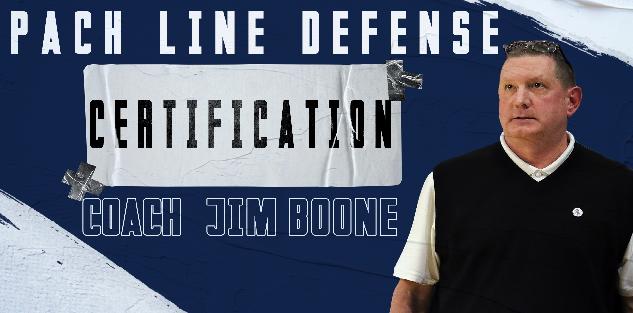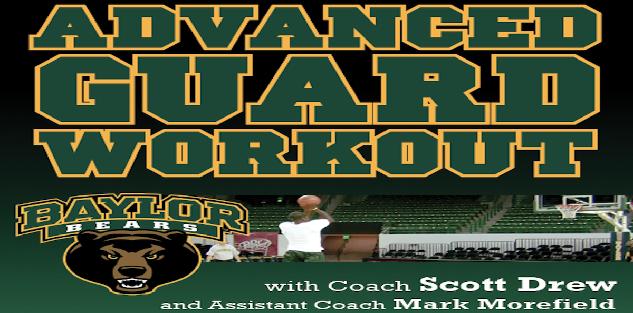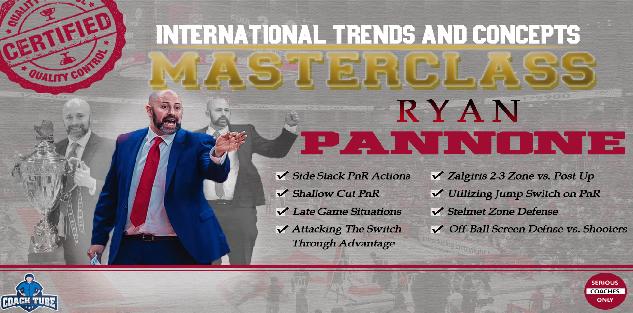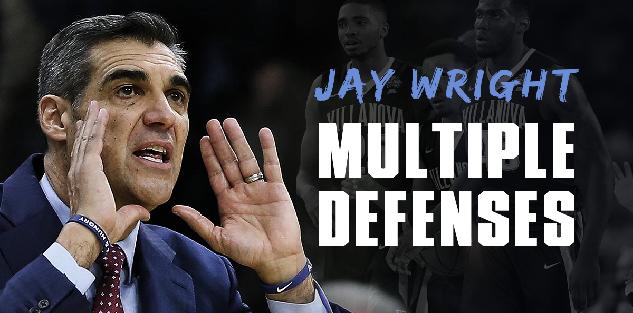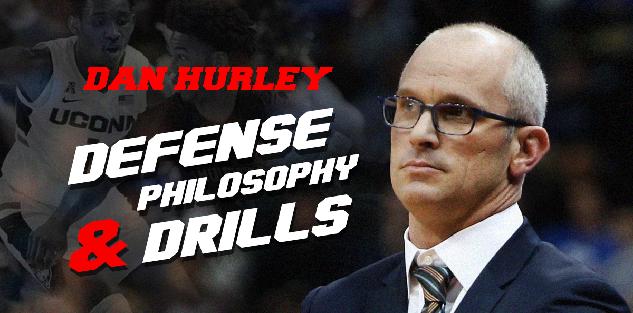Featured courses
- Two Great Game Situational Workouts For the Basketball Offseason by Grant Young
- Two Reads Basketball Players Must Understand Before Executing the Ball-Screen by Grant Young
- Two of LSU Coach Kim Mulkey’s Game-Winning Inbounds Plays by Grant Young
- Three Effective Early-Season Defensive Basketball Drills by Grant Young
- Four Essential Tips For Basketball’s 1-3-1 Zone Defense by Grant Young
- Four Zone Defense Drills to Strengthen Your Team by Grant Young
- How to Beat the Three Most Common Pick and Roll Coverages by Grant Young
- Two Drills to Improve Shooting at the Start of the Basketball Season by Grant Young
- Core Basketball Principles That Dallas Mavericks Coach Sean Sweeney Teaches by Grant Young
- Three Competitive Shooting Drills For Your Basketball Team by Grant Young
- How To Teach The ‘I’ Generation of Basketball Players by Grant Young
- Three Elite Drills to Begin a Basketball Practice With by Grant Young
- How to Build a Championship-Winning Basketball Team Culture by Grant Young
- Two of Texas Women’s Basketball Coach Vic Schaefer’s Tips For Team Culture by Grant Young
- Atlanta Dream WNBA Coach Brandi Poole’s Four Sets for Secondary Offense by Grant Young
- NC State Basketball Coach Brett Nelson’s 4 Crucial Point Guard Qualities by Grant Young
- Kentucky Coach Mark Pope’s Five Guard Rules For Offense by Grant Young
- McNeese State Basketball Coach Will Wade’s 4 Core Pillars by Grant Young
- 4 Tips To Instantly Improve Your Free Throw Shooting by Tyler Linderman
- Assemble a Championship-Caliber Basketball Rotation by Brandon Ogle
- Two of UConn Coach Dan Hurley’s Key Defensive Drills by Grant Young
- Four Post Moves All Basketball Forwards Should Have In Their Bag by Grant Young
- Four of Baylor Coach Nicki Collen’s Midseason Pick and Roll Adjustments by Grant Young
- WNBA Legend Sue Bird’s Two Tips For Attacking on Offense by Grant Young
- Houston Coach Kelvin Sampson’s Three Keys for Building a Basketball Program by Grant Young
- Two of Tom Izzo’s Top Michigan State Defensive Drills by Grant Young
- Four of Olympic Gold Medalist Coach Mechelle Freeman’s Relay Race Strategies by Grant Young
- Three Key Strategies Will Wade Uses to Build a Dominant Team by William Markey
- Five UConn Huskies Men’s Basketball Plays That You Can Use by Grant Young
- Three Tips for Maintaining Team Culture at the End of a Basketball Season by Grant Young
- Three Dribble Drive Motion Drills to Teach Your Basketball Team by Grant Young
- Three Dribbling Drills For Non-Primary Ball Handlers by Grant Young
- Four Advanced Ball Handling Drills For Basketball Guards by Grant Young
- Three Tips to Sharpen Your Post Player’s Footwork in Basketball by Grant Young
- These Three Pick and Roll Drills Are Crucial For Any Ball Screen Offense by Grant Young
- Three Closeout Drills to Improve Basketball Shooting Defense by Grant Young
- Three Tips to Perfect the Packline Defense in Basketball by Grant Young
- Four Keys to Executing the Read and React Offense in Basketball by Grant Young
- Three Tips to Develop Elite Basketball Shooters by Grant Young
- Three Crucial Keys to Executing the 5 Out Offense in Basketball by Grant Young
- These Three Offensive Sets Will Help You Beat Any Zone Defense by Grant Young
- Three Transition Basketball Drills To Play With More Pace by Grant Young
- Three 5 Out Offense Drills Any Basketball Coach Can Use by Grant Young
- Four Vital Techniques for a Motion Offense in Basketball by Grant Young
- Three Baseline Inbounds Plays To Win Your Basketball Team Games by Grant Young
- Four Drills For Sharpening the European Ball Screen Offense by Grant Young
- Three Positioning Tricks For a Basketball Zone Offense by Grant Young
- Three Rules to Perfecting Basketball's Lock Left Defensive System by Grant Young
- UCLA WBB Coach Cori Close’s Two Keys to Winning the Mental Game by Grant Young
- Four of Alabama Coach Nate Oats’ Favorite Basketball Drills by Grant Young
- Three Ways To Turn Transition Offense in Basketball Into Points by Grant Young
- Three Drills to Master Basketball's Pack Line Defense by Grant Young
- Three Transition Defense Drills to Halt Fast Breaks by Grant Young
- Four Offensive Rebounding Drills to Win Second Possessions by Grant Young
- 4 Defensive Technique Drills from Boston Celtics Assistant Coach Brandon Bailey by Marek Hulva
- 5 Drills to Improve Ball Handling by Tyler Linderman
- 13 FUNNY BASKETBALL GIFS by Alex
- BASKETBALL SPEED AND AGILITY: 8 QUESTIONS FOR COACHTUBE EXPERT RICH STONER by Jaycob Ammerman
- Defensive Strategies for Basketball by Ryan Brennan
- 4 Keys To Turning Your Program Into Championship Contender By Dallas Mavericks Coach Sean Sweeney by Marek Hulva
- 5 Components to Creating a Winning Basketball Program by Justin Tran
- Guide to Becoming a Lethal Scorer in Basketball by Justin Tran
- Zone Defense In the NBA Eastern Conference Finals by James Locke
- Mastering Court Mobility: Tips for Effective Movement in Basketball by Justin Tran
- 5 Basketball Shooting Drills: How to Develop a Sharpshooter by James Locke
- 6 Points of Emphasis for a Successful 5 Out Offense by Jaycob Ammerman
- Effective and Efficient Methods to Practice During the Basketball Season by Justin Tran
- Three Great Passing Drills From a Basketball Coaching Legend by Grant Young
- 7 Principles For Perfecting the Princeton Offense in Basketball by Grant Young
- How to Replicate A Modern NBA Offense by Grant Young
- Three Great Two-Ball Dribbling Drills For Basketball Development by Grant Young
- Two Rebounding Drills to Win Your Basketball Team Championships by Grant Young
- How to Improve Your Basketball Team’s Defense With the Shell Drill by Grant Young
- How Baylor Basketball’s Scott Drew Develops Elite Guard Play by Grant Young
- Off-Ball Movement Tips and Strategies: Lessons From the NBA Finals by James Locke
- Player Development: Scott Drew’s Tips for Producing NBA Guards by James Locke
- How to Execute a Spread Offense in Basketball by Grant Young
- Four Quality Quotes From Four Final Four Coaches by Grant Young
- A Guide to the Pack Line Defense by Alex Martinez
- 3 Defensive Build Up Drills to Improve Team Basketball Defense by Grant Young
- Battle of Two Great Coaches: Best Plays from the NBA Finals Contenders by Justin Tran
- 10 Creative Ways Athletic Programs Can Use a Video Board to Raise Money by Coach Williams
- How to Use 3 on 3 to Improve Your Basketball Team by Grant Young
- How to Defend the Pick and Roll by Grant Young
- Mastering Basketball Defense: Techniques, Drills, and Strategies for Success by Justin Tran
- Three Tips From The Coach Who Developed Giannis Antetokoumnpo by Grant Young
- 2023 NBA Draft: Skills and Technique from Top Prospects by Justin Tran
- From College to the Pros: Transitioning the Dribble Drive Offense by Justin Tran
- Positionless Basketball: Redefining Roles on the Court by Justin Tran
- Revolutionize Your Offense: Proven Concepts to Elevate Your Basketball Game by Justin Tran
- 5 Essential Fastbreak Drills Every Basketball Coach Should Know by James Locke
- How to Run a Circle Offense in Basketball by Grant Young
- Game-Changing Strategies: ATO Plays in the EuroLeague and Olympics by Justin Tran
- How to Stand Out at Basketball Tryouts by Grant Young
- How to Improve Your Basketball Team’s Transition Defense by Grant Young
- Indiana Fever GM Lin Dunn’s Two Keys For Women’s Basketball Coaches by Grant Young
- Strength Training Strategies Every Basketball Player Should Have by Grant Young
- A WNBA Basketball Coach’s Four Priorities In Transition Defense by Grant Young
- Three Adjustments to Make When Your Basketball Offense Isn’t Working by Grant Young
- Three Pillars to Applying Defensive Pressure on the Basketball Court by Grant Young
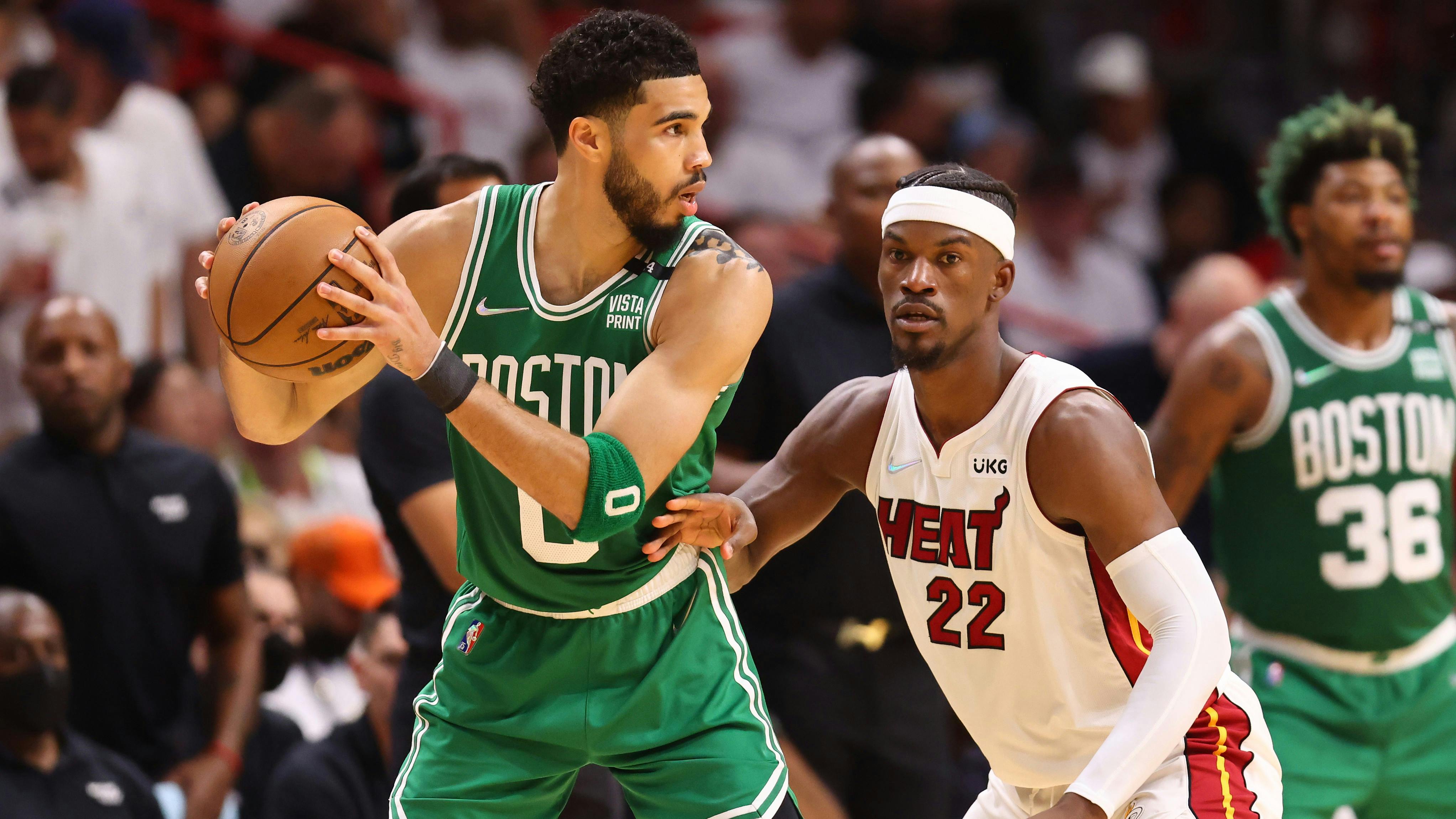
Zone Defense In the NBA Eastern Conference Finals
- By James Locke
The 2023 Eastern Conference Finals was a rollercoaster. Two star-studded rosters battled it out through 7 games as the 8th-seeded Miami Heat pulled off the upset to keep their miraculous Finals run alive, and the 2nd-seeded Boston Celtics fell short of becoming the first team to overcome a 3-game deficit.
Through all 7 action-filled games, both Miami and Boston implemented highly effective defensive strategies to counter the other’s offensive strengths. Specifically, both teams utilized zone defenses to great effect. For instance, Miami’s use of zone defense helped limit Celtics star Jayson Tatum to 14 points in Monday night’s Game 7, spelling Boston’s 3-game comeback effort.
The implementation of zone defense disrupted the coordination and flow of opposing offenses, forcing them to adjust their strategies in seek of alternative scoring opportunities. Zone Defense proved effective in limiting dribble penetration and protecting the paint, forcing lower percentage outside shots. This proved to be the deciding factor in the series, as the Celtics shot only 30.3% from behind the arc, leading to their elimination.
The heavy use of zone defense in the Eastern Conference Finals indicates a broader trend of utilizing the zone as a method to combat the movement toward positionless basketball and explosive offensive strategies.
To examine this trend, we’ve compiled a breakdown of the different zone defense strategies used by the Miami Heat and Boston Celtics in the Eastern Conference Finals.
Matchup Zone Defense
Perhaps the most effective and prevalent zone defense used by the Heat in the Eastern Conference Finals was the Matchup Zone.
As former NBA G League and Duke Women’s basketball coach Hernando Planells details, matchup zone combines concepts of man-to-man defense and zone defense, making it an on-ball, off-ball hybrid defense. Matchup zone assigns specific defenders to guard specific offensive players while maintaining the positioning and rotational principles of the zone defense.
While the on-ball defender plays tight, close-out defense, similar to a man-to-man, the off-ball defense remains similar to help side man-to-man defense. While the matchup zone resembles a man-to-man defense, the defenders have the flexibility to switch freely with one another, allowing defensive big men to stay down low, protecting the paint, while quicker guards and wings defend the perimeter.
The matchup zone is versatile and difficult to prepare for, providing the defense with a key advantage.
The matchup zone has become a core tenet of Miami’s defensive strategy, as it provides an element of unpredictability to their defensive schemes. Using the matchup zone, the Heat are able to adapt to different offensive strategies, counter offensive threats, and create and maintain favorable defensive matchups through individual assignments, rotation, and active communication. This defensive strategy allowed the Heat to gain favorable defensive matchups and force low-percentage shots.
Here, Planells breaks down game film explaining the matchup zone.
Box-and-1 Zone Defense
While they will be watching the Finals from home, the Celtics put together a historic 3-game stretch, coming back from a 3-game deficit in large part due to strong defensive strategy and the use of the box-and-1 zone defense.
As described by Slovenian national team coach Luka Bassin, the box-and-1 defense is a highly effective defensive strategy employed by teams at all levels of basketball, used to neutralize a specific offensive threat while maintaining a zone scheme.
The box-and-1 involves four defenders forming a box around a key area, with a goal of contesting shots, protecting the paint, and limiting dribble penetration. For example, two players may defend the low blocks, while two others may defend the elbows or free-throw line extended.
The fifth player is assigned to guard a specific offensive player, applying tight man-to-man coverage, denying easy catches, and disrupting the player’s rhythm. The goal is to limit or completely shut out a given offensive player, forcing the offense to rely on other, perhaps less skilled options. The Celtics applied this pressure to star scorer Jimmy Butler, limiting his scoring ability.
This defensive strategy requires efficient adjustment and rotation, as well as coordination and communication of switches, screens, and other threats to avoid blown coverages.
This allows the defense to disrupt offensive flow, cause confusion, fatigue the offense’s star player, and force uncomfortable role players into a larger offensive role.
2-3 Zone Defense
While the 2-3 zone may be regarded as a basic and foundational zone defense scheme used at all levels of competitive basketball, it is still highly effective and was utilized frequently in the Eastern Conference Finals by both Miami and Boston.
The 2-3 zone is a defensive scheme that positions two defenders on each elbow or free throw line extended, two defenders on each low block or short corner, and one defender in the paint.
The 2-3 zone is meant to limit paint penetration and force outside shots and is especially effective if implemented with lengthy, athletic personnel.
As longtime college basketball coach Tim O’Toole describes, the 2-3 zone is useful as it disrupts rhythm, allows for all shots to be contested, a guaranteed rebound triangle, more clarity and coordination, and provides a better position to fastbreak from, among other advantages.
O’Toole emphasizes the need to stress aggressiveness, movement and awareness when playing the 2-3 zone. It is also important to keep the ball out of the middle and to avoid being screened at all costs.
Here, Tim O’Toole details how to implement a 2-3 zone at a high level in his 2-3 zone clinic.
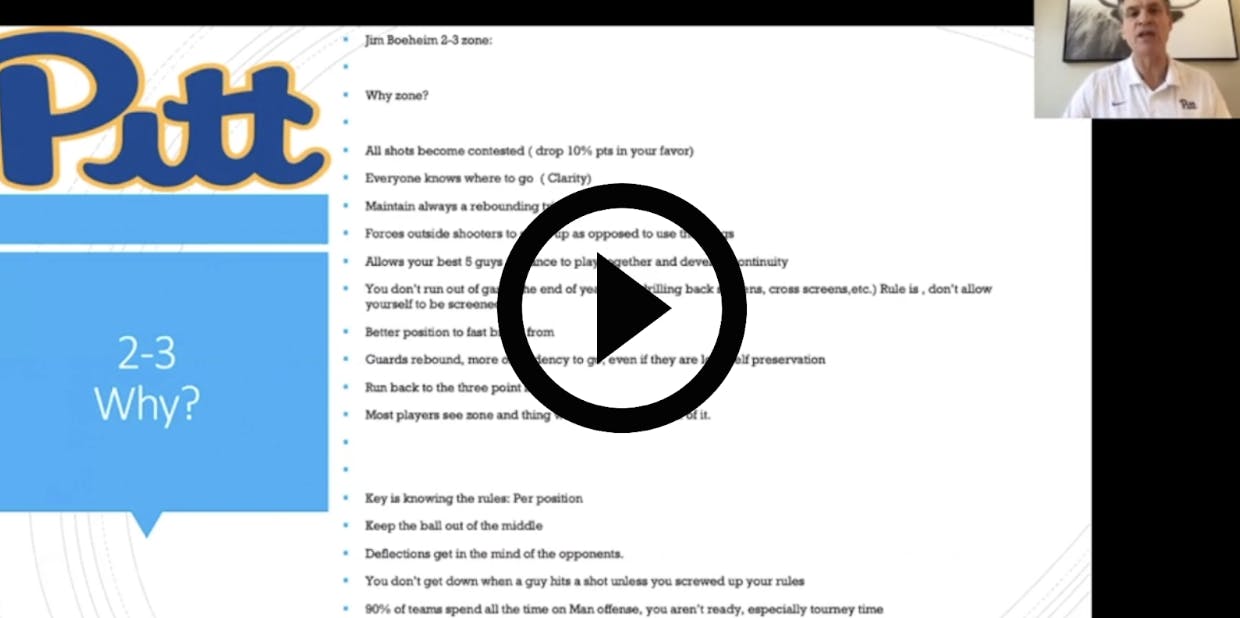
Recap
As Miami faces off against the Denver Nuggets in the Finals, be on the lookout for the high usage of zone defense as well as the offensive strategies used to counter.
As the zone defense upholds its prevalence and effectiveness in the NBA, coaches and players at all levels can learn from and implement these strategies to pad the win column.

